Silencer Saturday #377: BOE Suppression Mod 1S

Good afternoon, everyone, and welcome back to TFB’s Silencer Saturday, brought to you by Yankee Hill Machine, manufacturers of the new YHM R45 Multi-Host Suppressor. This week we are taking another look at the new silencers from BOE Suppression, particularly the Mod 1S. I got to put a few rounds through one and have some initial impressions to share.
Silencer Saturday @ TFB:
- Silencer Saturday #376: The Curious (Legal) Case Of George Peterson
- Silencer Saturday #375: Will It Run Without A Booster?
- Silencer Saturday #374: Hands On With BOE Suppression
- Silencer Saturday #373: A "Class Tree" Wooden Silencer
- Silencer Saturday #372: Centurion Arms Maximus-L
Disclaimer: Silencers are highly regulated in the United States. Be sure you know and understand the applicable laws. Failure to do so could result in severe criminal penalties including fines and prison time. Also, misuse of firearms or silencers can result in death or serious bodily injury. Be safe out there!
Background & Features
A few weeks ago, we did an overview of the BOE Suppression family of silencers. This is a new project from C-Products Defense aka Duramag and a major departure from making magazines. Unlike many other rifle suppressors, which usually feature fully welded construction, the BOE Mod 1S is a completely modular design. The core, outer serialized tube, and front end cap are all separate and ships from the manufacturer disassembled in a hard case.
Thanks to this design, cores and end caps can easily swap out to change materials or bore diameters. Current bore diameters are .223, .30, .36, and .45, and titanium or inconel construction are both available. Switching between them with the included wrench is easy. The wrench also includes a hex opening for tightening the end caps down. And, because most of us would lose track very quickly otherwise, the cores and end caps are all marked with the bore diameter.
The core is the most original part of the design. BOE uses additive manufacturing to print the complex geometries that make up the structure. Instead of being a series of cups or K-baffles welded together, this manufacturing technique results in one solid piece that, if built properly, has no welds to break. It is also easily replaced if the suppressor ever needs to go back to the manufacturer for warranty service. This construction is also easy to modify for future design tweaks or refinements.
On The Gun - Unvented
I am fortunate that these suppressors are currently at an 07/02 SOT that has an indoor range attached. My tax stamps have not been approved yet, but I can shoot them in the range while the paperwork is handled. It can be hard to get a real sense of how quiet a suppressor is on an indoor range but it is a good opportunity for function testing. I brought in one of my likely host guns to see how it performs.
BOE stays out of the mounting game entirely. There are many options already on the market, and adding one more design when most suppressor buyers already have a bunch of mounts on guns would add extra expense without much benefit. Back when I got into silencers I bought mostly SilencerCo equipment, and consequently have myriad ASR muzzle devices. Thanks to the HUB threading I just added an ASR mount, torqued it down, and threw it on a host gun with an ASR muzzle device.
One of those muzzle devices is the uncommon A2-style mount that I wrote about in one of my first Silencer Saturday articles. It lives on a quasi-Israeli mixmaster build which is not a great suppressor host. This gun started life with a C7 upper purchased for $20 from a customer who wanted a flattop. I then bought the cheapest Palmetto State Armory 10.5-inch upper I could find and used the whole barrel assembly and BCG to populate the C7. The lower is a cosmetic blem that was a Christmas bonus from the shop one year, with a no-name lower parts kit, Brownells A1 grip, and a recently-added H&R HAR-15 arm brace. It felt like the kind of mixed-up builds often seen in IDF service so I threw on a Meprolight M21 reflex sight in a gooseneck mount (side note, I have a review in the works comparing this to the Trijicon Reflex to see which is the best gooseneck option) and a TDI Israeli sling. It is also running an OD green Duramag Speed 30 aluminum mag because it looks good in this gun, and it feels right to use mags and silencers from the same company.
I haven’t measured the gas port but it is on the larger side. There is always a lot of carbon buildup and gas blowback while shooting full-power ammo. The BOE Mod 1S is the shorter member of the family, and this one is fitted with an inconel core. That is a hard-use material and is a wise choice for a short barrel and intense firing schedule. First up was the closed end cap, which produces a more backpressure but also cuts down on signature.
My first impression was surprise: this was quieter than expected. Short barrels and short suppressors are not known for being a quiet combo. And while it was not as quiet as other setups with longer barrels and more internal volume, it was quieter than I expected. Gassing to the face was minimal and the ejection pattern was around 2 o’clock. My subjective impression was that it felt like much less gas to the face than traditional older silencer designs.
On The Gun - Vented
With the included wrench, and while the can was still too hot to hold, I pulled off the endcap with the included wrench and swapped to the vented one. The gassing was reduced further to the point where the gun felt like it was running unsuppressed. The trade-off was increased blast and noise. It is hard to compare silencer loudness even in laboratory conditions, but it was perceptibly louder even with many other people shooting in close proximity at the same time. There was also noticeably more flash. The first round put out a pretty impressive fireball, and successive shots usually had a small flash. I took some video while shooting and have some still images showing the blast from the first shot and a representative amount of flash on the following shots.
Swapping between vented and unvented based on needs is a pretty cool feature. If sound reduction is the goal, use the solid front cap. But if that is not as big of a deal and you want to do less gun cleaning, or if the host gun is sensitive to backpressure, the vented cap is a great alternative.
As soon as the paperwork is handled I am looking forward to taking the BOE Mod 1S outside to see how it really sounds, and to try it on several more guns. The .30 and .36 caliber models should also be a lot of fun as well. Thanks for reading and we will see you back here next week.
SILENCER SHOP – HANSOHN BROTHERS – DEADEYE GUNS
MAC TACTICAL
ALL YHM PRODUCTS AT BROWNELLS
DEALERS: If you want your link to buy YHM suppressors included in future Silencer Saturday posts, email: silencers@thefirearmblog.com

AKA @fromtheguncounter on Instagram. Gun nerd, reloader, attorney, and mediocre hunter.
More by Daniel Y
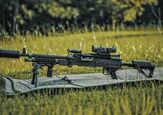
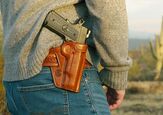
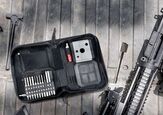














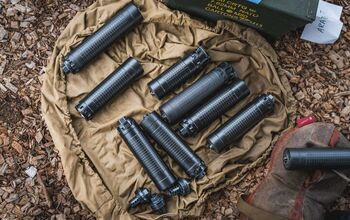
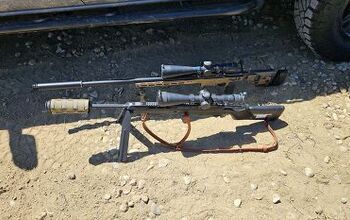

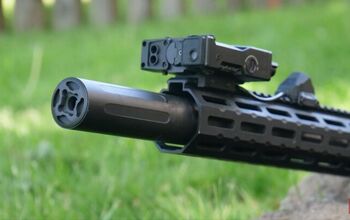
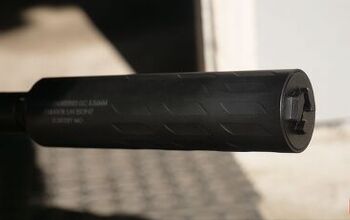




![[SHOT 2025] Miller Precision Firearms to Produce the Serbu SU-15 Upper](https://cdn-fastly.thefirearmblog.com/media/2025/01/23/21471/shot-2025-miller-precision-firearms-to-produce-mark-serbu-s-su-15-up.jpg?size=350x220)
![[IDEX 2025] The Russian 2B25 Silent Mortar](https://cdn-fastly.thefirearmblog.com/media/2025/02/26/03591/idex-2025-the-russian-2b25-silent-mortar.jpg?size=350x220)
![[SHOT 2025] Taylor’s And Co. Has New 9mm Lever TC73 In Production](https://cdn-fastly.thefirearmblog.com/media/2025/01/24/13041/shot-2025-taylors-and-co-has-new-9mm-lever-tc73-in-production.jpg?size=350x220)


![[DEFEA 2025] Maktes Arms from Armenia Presents Modular Bullpup Rifle](https://cdn-fastly.thefirearmblog.com/media/2025/05/03/07191/defea-2025-maktes-arms-from-armenia-presents-modular-bullpup-rifle.jpg?size=350x220)
Comments
Join the conversation
I find these super interesting from a technical perspective. Don't know that I've seen a similar core design before. Available testing shows they perform pretty well.
Got to test one out last year sometime, and was super impressed. These things can take a beating! The way its designed makes it seem like it is indestructible!